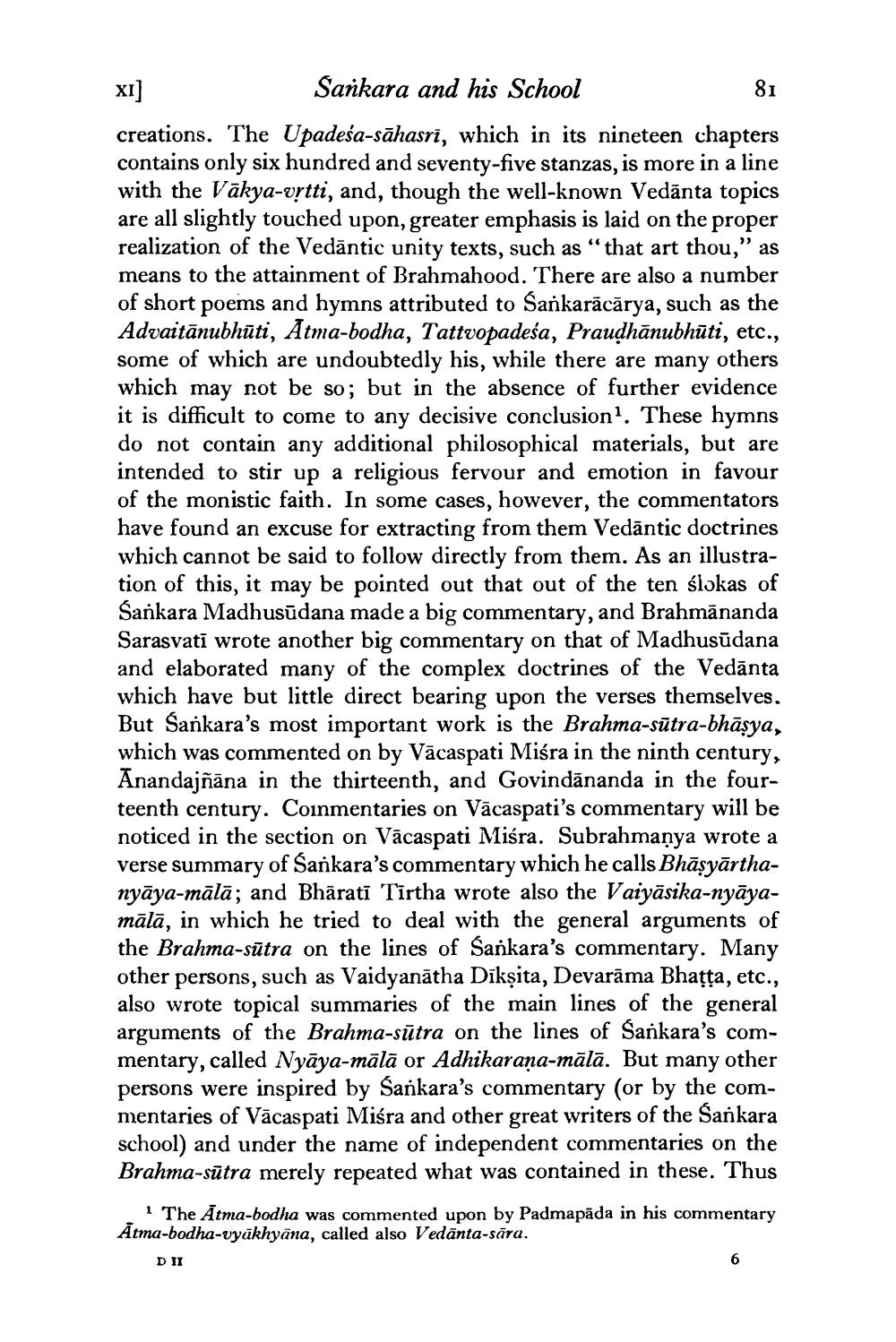________________
XI]
Sankara and his School
81 creations. The Upadeśa-sāhasri, which in its nineteen chapters contains only six hundred and seventy-five stanzas, is more in a line with the Vākya-vrtti, and, though the well-known Vedānta topics are all slightly touched upon, greater emphasis is laid on the proper realization of the Vedāntic unity texts, such as “that art thou,” as means to the attainment of Brahmahood. There are also a number of short poems and hymns attributed to Sankarācārya, such as the Advaitānubhūti, Atma-bodha, Tattvopadeśa, Praudhānubhūti, etc., some of which are undoubtedly his, while there are many others which may not be so; but in the absence of further evidence it is difficult to come to any decisive conclusion. These hymns do not contain any additional philosophical materials, but are intended to stir up a religious fervour and emotion in favour of the monistic faith. In some cases, however, the commentators have found an excuse for extracting from them Vedāntic doctrines which cannot be said to follow directly from them. As an illustration of this, it may be pointed out that out of the ten ślökas of Sankara Madhusūdana made a big commentary, and Brahmānanda Sarasvati wrote another big commentary on that of Madhusūdana and elaborated many of the complex doctrines of the Vedānta which have but little direct bearing upon the verses themselves. But Sankara's most important work is the Brahma-sūtra-bhāsya, which was commented on by Vācaspati Miśra in the ninth century, Anandajñāna in the thirteenth, and Govindānanda in the fourteenth century. Coinmentaries on Vācaspati's commentary will be noticed in the section on Vācaspati Misra. Subrahmanya wrote a verse summary of Sankara's commentary which he calls Bhāsyārthanyāya-mālā; and Bhāratī Tīrtha wrote also the Vaiyāsika-nyāyamālā, in which he tried to deal with the general arguments of the Brahma-sūtra on the lines of Sankara's commentary. Many other persons, such as Vaidyanātha Dikșita, Devarāma Bhațţa, etc., also wrote topical summaries of the main lines of the general arguments of the Brahma-sūtra on the lines of Sankara's commentary, called Nyāya-mālā or Adhikaraṇa-mālā. But many other persons were inspired by Sankara's commentary (or by the commentaries of Vācaspati Miśra and other great writers of the Sankara school) and under the name of independent commentaries on the Brahma-sūtra merely repeated what was contained in these. Thus
1 The Atma-bodha was commented upon by Padmapāda in his commentary Atma-bodha-vyākhyāna, called also Vedānta-sära.
DII




